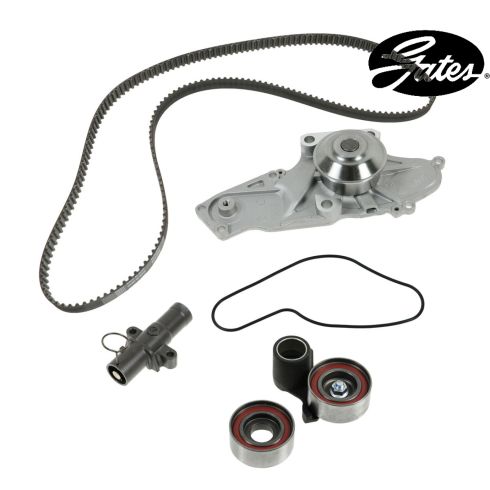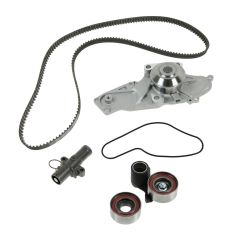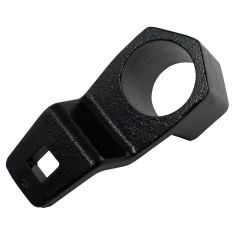GAEEK00013-Honda Acura Saturn Timing Belt Kit with Water Pump Gates TCKWP329

Replaces
2005 Acura MDX V6 3.5L Timing Belt Kit with Water Pump Gates TCKWP329

Frequently bought together
Product Reviews
Loading reviews
4.74/ 5.0
27
27 reviews
Great. Just like stock
January 23, 2017
Great job I love one a auto I have never had any complaints always get my parts fast and as usual they are just as good as OEM
Honda 2009 timing belt kit
August 10, 2018
It was a perfect fit for my Honda Accord V6 2004 4 door. No issues with installation
Great product!
March 1, 2019
The items were exactly what I expected. True oem fitment! Shipping was earlier than promised too. Will buy from 1a auto again for all my needs
06 Acura MDX timing belt kit
March 4, 2020
This kit was a direct replacement for 2006 Acura MDX, everything bolted on well and seemed to be of good quality. Bearings seemed robust and tight with no play. There was a service bulletin and a shim explaining there was an update and using the shim would stop chatter from the timing belt as it went around the idler pulley. The process of replacing the timing belt and water pump was time consuming but very doable, I found a couple of YouTube videos that gave good instruction on how to do it in detail. That along with the instructions included in this kit made the job much less of a headache, the included instructions also gave the torque specifications of every bolt so that there is no guessing at how tight each bolt should be when reassembling. I follow the advice from a blog where the author stated he soaked the crank pulley bolt with penetrating oil for over a week, I did the same whenever I remembered I would spray the bolt. This made the removal of it very easy and anti-climacti
Good kit
April 3, 2020
Fit perfectly
Good quality
September 25, 2020
Is like original part and fitted exactly. Very good product and the service and shipping fast and secure.
Gates are quality replacement parts.
October 18, 2020
All the parts fitted and are of a Gates quality replacement.
Works and seems good quality
December 22, 2020
Installed this on my 2006 Honda Pilot EX-L. Everything fit exactly as expected. All parts had the same seams and castings as the factory parts. The new parts appeared to be made of good quality components. I loved that the timing belt tensioner came pre-locked with a pin so I could go right to the install and pull the pin. However, the pin was tricky to get out, since the ring just unbent when I pulled it. No problem though, it came out with a pair of pliers. Arrived quickly even during the holidays (I paid extra for expedited shipping). I would purchase again.
Water pump/Timing Belt kit
March 10, 2021
Product came quick and was just as described. Went with suggested tool which turned out to be a necessity for a first timer like myself. Followed directions from watching video and that turned to be the smartest thing I did. Absolutely a pleasure doing business with 1A.
Gates water pump timing set for Honda.
September 30, 2021
Seems to be Quality parts. Fit my 2006 Honda Pilot perfect. Gates has always been my go to for quality belts. So I would imagine their timing belts will be good as well.
Fits in 2013 Crosstour 3.5 6V
December 3, 2021
Everything fitted perfectly in my 2013 Honda Crosstour 3.5 6V.
December 4, 2021
Arrived on time and true to the photos
Great fit. Gear up before starting.
January 5, 2022
Everything fit without problems. Torque specs in the instructions were sometimes confusing but are there. I would suggest highlighting the specs that apply to you prior to starting so you don't accidently read the wrong line when re-assembling and pay attention to the units (in/lb vs ft/lb). Know that the crank bolt will be the hardest thing to remove so buy the thick-walled impact socket (Google Honda crank bolt tool) and have a heavy duty impact wrench lined up. I borrowed a Milwaukee M18 Fuel with 1400 ft/lbs of torque and it came right off. There is also a special wrench to hold the crank pully when tightening it back up.
Awesome company, awesome help videos!!!
January 11, 2022
Working with 1A Auto as a partner on the project was simply amazing!! Good products, well priced and speedy delivery. The video on how to remove and replace the timing belt on my 2013 Accord was incredible. It was detailed, perfectly correct, full of outstanding tips. It was like having a mechanic sta ding behind me giving advice. Great job, well done!
Great quality!
March 15, 2022
Great, high quality kit easily installed!
fit like a glove
August 4, 2022
so far its been great, time will tell.
Great
September 9, 2022
Yes the water pump and kit is great have to problem yet. Still riding like a champ.
Works as advertised!
September 28, 2022
No issues since the install and the engine runs fine and there is no more weird noises coming from the engine
Right parts right on time
October 31, 2022
The kit was all there, right parts, right on time. All good.
February 15, 2023
Perfect fit, no problems at all. So far is working great.
May 24, 2023
Very good
August 15, 2023
Water pump failed after 1.5 yrs
March 6, 2024
Has continued to work without issues
Awesome
March 12, 2024
It was a perfect fit and sounds great now
Killer customer service
[{"url": "https://wac.edgecastcdn.net/001A39/prod/media/pNISJll75W64CYGsite/7dda22df6456228887684bc1ee3e878b_1710517526187_2.jpeg", "caption": "After install very clean new working amazing"}, {"url": "https://wac.edgecastcdn.net/001A39/prod/media/pNISJll75W64CYGsite/6a78230596ed63d45ae993cbb6e7841f_1710517526187_3.jpeg", "caption": "No issues with new parts no leaks or any defects"}]
March 15, 2024
No issues with the timing chain itself Or the water pump did have issues with the pulley idler, pulley and belt they sent out reached out to them. They quickly addressed it and refunded me, so no complaints. Amazing customer service. Had no headaches easy install
good Quality as well
April 19, 2024
fits perfectly and no problem works well.
Timing belt on Saturn
May 15, 2024
Working good so far. After watching several videos and doing and undoing some things it went really well. Haven't put many miles on the Saturn yet but like I said, so far it's good!
Customer Q&A
WHO IS THE WATER PUMP MANUFACTURER ?
WHO IS THE WATER PUMP MANUFACTURER ?
August 26, 2015
10
I do not know except that it appears to fine. Changed the timing belt and has no problems so far.
August 26, 2015
Norman J
10
I am not sure.
August 27, 2015
Jack W
Would this timing belt kit and water pump fit a 2007 Saturn vue?
May 21, 2021
10
Yes this will fit a 2007 Saturn Vue 3.5L.
May 21, 2021
T I
Will this fit the 2014 Acura TL SH-AWD?
August 26, 2021
10
Yes, this part will fit your vehicle as long as it's a 3.5L or 3.7L engine.
August 27, 2021
Adam G
10
1A Auto should answer this question!! Not a customer!!
August 27, 2021
Kevin M S
Hello will this fit a 2007 Acura MDX 3.7?
September 16, 2021
10
Yes, this part will fit your vehicle.
September 16, 2021
Cristina P
10
Yes
September 17, 2021
Akeha K
10
Yes
September 17, 2021
Akeha K
Will this fit 2007 Acura MDX 3.7 AWD?
September 16, 2021
10
Yes, this part will fit your vehicle.
September 16, 2021
Cristina P
10
Do buy substandard parts through a company that doesnt stand behind their products. Just saying
September 17, 2021
S G
10
I do think it fit. I have a 2006 Honda Pilot 4WD. It fit perfect and they are the same engine.
September 30, 2021
Brian G
Will this fit a 2013 Honda Pilot EX-L?
December 27, 2021
10
Yes, this part will fit your vehicle as long as you have a V6 3.5L engine.
December 27, 2021
Emma F
10
1AAuto's Fitment chart shows this kit only fits the Honda Pilot (all V6 3.5L) from 2005-2012. Therefore, there's a risk it will not fit your 2013 Honda Pilot EX-L
December 27, 2021
Kevin M S
I have accord sport 2.4 liter not v6. Does this fit my car it ? It only says it fitted for honda 15 accord.
August 15, 2023
10
This is for the v6 only
August 15, 2023
Brad S
10
This part will not fit your vehicle, but we may have a part that is listed to fit.
Please enter your vehicle's year make and model in the search bar at the top of the page. This will display parts guaranteed to fit your vehicle. Just be sure to verify all of the information shown in the Vehicle Fit tab before ordering.
August 15, 2023
Jean O
Acura is a registered trademark of Honda Motor Co., Ltd.. 1A Auto is not affiliated with or sponsored by Acura or Honda Motor Co., Ltd..
See all trademarks.










